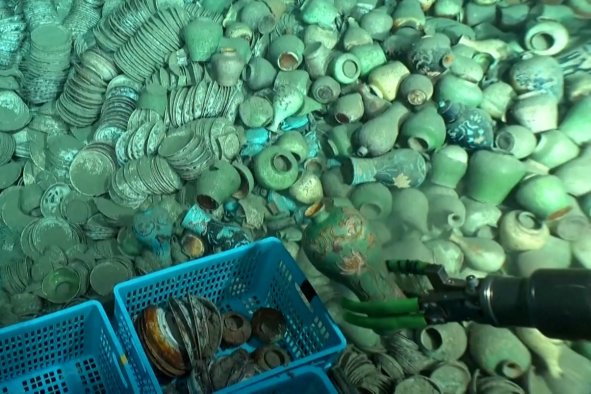A team of researchers is hunting for submerged archaeological sites that may lie offshore in the Gulf of Mexico
The project plans to investigate areas of the Gulf that were dry land during the last ice age—which ended around 11,000 years ago—but ended up underwater because of the rising sea level.
As part of the project, the team, which has experts from several U.S. institutions and the University of Bradford's Submerged Landscapes Research Center (SLRC) in the U.K., will do offshore surveys in the Gulf. During these surveys, researchers will test out novel methods to detect submerged archaeological sites.
Despite more than a century of research, archaeologists still know relatively little about the sites left behind by the Native Americans who lived in such landscapes before they were submerged. To date, less than 50 submerged sites have been identified in the Gulf, and many of them were found in a semi-disturbed state.
According to the team, a large number of submerged sites need to be detected in the area to advance scientific understanding of the period in human history when they were above the water.
Indigenous people were once present in these now-submerged areas, and they would have had to adapt to environmental changes, such as rising sea levels, as the ice age ended. Scientists estimate that sea levels have risen by around 400 feet thanks to the melting of vast ice sheets between 19,000 and 6,000 years ago.
As part of the project, researchers will collaborate with Native American communities through workshops, training and fieldwork opportunities. For example, all data and models from the project will be analyzed collaboratively with these partners to define potential areas of interest to the communities.
"One of the most important aspects of this project is knowledge transfer to Tribal Nations across the region. We know from multiple global examples that Indigenous stewardship of landscapes results in better outcomes," the SLRC's Cook Hale said in a press release.
"The Gulf has a long history of offshore development in oil and gas prospection that is now evolving into green initiatives such as offshore wind. It is critical that Tribal Nations be at the forefront of caring for these landscapes going forward, and we're really pleased to be part of a project that can support that effort," Hale said.
The SLRC has also been involved in a project that is revealing an "astonishing" submerged landscape that stood above sea level thousands of years ago in the Adriatic Sea—an arm of the Mediterranean—off the coast of Croatia.
Do you have a tip on a science story that Newsweek should be covering? Do you have a question about archaeology? Let us know via science@newsweek.com.
Disclaimer: The copyright of this article belongs to the original author. Reposting this article is solely for the purpose of information dissemination and does not constitute any investment advice. If there is any infringement, please contact us immediately. We will make corrections or deletions as necessary. Thank you.



